How To Plan A Europe Trip From India
Air & Ocean Freight From India to UK
FCL, LCL and Air freight forwarding: information and online quote
With deep-rooted connections between India and the United Kingdom and a lengthy history of importing and exporting, trade lanes between the two countries are long-established. Does your business have a long history of importing from India to the United Kingdom? Perhaps your enterprise is a start-up, taking its first steps towards exporting commercial goods between the two nations.
Whatever your situation, if you engage (or plan to engage) in international trade between India and the UK, this page should come in useful.
In the sections that follow, you will find insights into air freight and tips for shipping a container from India to the UK by sea. We share information here about key ports and airports in both countries and how long shipments typically take to reach a given destination.
You’ll also discover details of the shipping documents that customs officials will need to see for import and export clearance, and other guidance to help you export from India to the United Kingdom successfully.
Know Your Options for Shipping From India to the United Kingdom
Ocean and air shipping from India to the United Kingdom are currently the only practical ways of transporting commodities between these two countries. Below, we take a closer look at both modes of transportation.
Ocean Freight From India to the United Kingdom
Less than Container Load (LCL): If you’re planning to ship a fairly small consignment, LCL is likely to be your best mode of shipping. Your goods will share container space with other shippers’ consignments bound for the UK.
Full Container Load (FCL): This form of ocean shipping suits larger consignments for import from India to the United Kingdom. Pay a flat rate and you will get exclusive use of a shipping container and its shipment from port to port, or even door to door.
Air Freight from India to the United Kingdom
If your shipping deadlines are demanding, air freight is the best way to export from India to the United Kingdom at speed. Considerably faster than ocean shipping, it’s also substantially more expensive, especially for larger loads.
How Much Does it Cost to Ship Freight From India to the UK?
Several factors will be taken into account when calculating the cost of shipping freight from India to the United Kingdom. they include:
- The total weight of the shipment
- Its size and volume
- How far it must be transported
- If air or ocean shipping is the preferred mode of transit
- If a port-to-port, port-to-door, door-to-port, or door-to-door service is selected
If you’re unsure whether air or ocean shipping is best for you, it’s a good idea to get a quote for both and compare them. Usually, if your consignment takes up less than half the capacity of a 20ft shipping container, LCL will be your most economical option.
Larger loads are usually best sent by FCL in a shipping container from India to the United Kingdom. The cost will usually work out less per unit than LCL as FCL shipping entails paying a flat rate for a shipping container.
Air freight is typically more expensive. But, for goods that weigh 100kg or less, it will probably cost a similar amount to fly your freight from India to the UK as to ship it by ocean. It will also take a lot less time.
Shipa Freight, like most freight forwarders, doesn’t handle shipments weighing 35 kilograms or less. You should approach an international courier for a quote when shipping consignments in this weight category.
How Long Does it Take to Ship Cargo From India to the UK?
Shipping a container from India to the United Kingdom by ocean takes much longer than flying your freight. The speed of transit plays a big role in the difference between air and ocean shipping. Cargo vessels average a speed of 35 km/h while aircraft can reach up to 970 km/h.
How Long Does It Take to Ship Cargo by Sea From India to the United Kingdom?

The ocean trade lanes from India to the United Kingdom have long been in use. Over the decades, steaming times have been cut as container vessel capabilities have improved. Below is an outline of the current journey times from India to the UK. Please note that times are only port-to-port estimates and do not take into account additional time required for the domestic transportation of your goods.
- Kolkata to London Gateway – 41 days FCL
- Kolkata to Southampton – 34 days FCL
- Cochin or Mundra to Felixstowe – 23 days FCL
- Cochin to London Gateway – 31 days FCL
- Hyderabad to Felixstowe – 40 days LCL
- Chennai or Tuticorin to Belfast – 35 days FCL
- Chennai to Felixstowe – 27 days FCL & LCL
- Chennai to London Gateway – 29 days FCL
- Mundra to Belfast – 29 days FCL
- Mundra to London Gateway – 26 days FCL
- Mundra to Southampton – 20 days FCL
- Nhava Sheva to Felixstowe – 26 days FCL & LCL
- Nhava Sheva to London Gateway – 28 days FCL, 24 days LCL
- Tuticorin to Felixstowe – 23 days FCL, 21 days LCL
- Tuticorin to London Gateway – 28 days FCL
How Long Does It Take to Ship Cargo by Air From India to the United Kingdom?
Below are the estimated transit times for air freight between India and the UK. These are airport-to-airport estimates, so you’ll need to add extra time for any domestic road or rail transportation.
- Ahmedabad to London – 7 days
- Bangalore to London – 4 days
- Hyderabad to London – 9 days
- Chennai, Delhi, or Mumbai to London – 6 days
- Delhi, Kolkata, or Ahmedabad to Birmingham – 4 days
- Bangalore to Birmingham – 8 days
- Mumbai to Birmingham – 6 days
- Chennai to Birmingham – 8 days
- Kolkata to London – 3 days
- Delhi to Manchester – 4 days
- Chennai to Manchester – 5 days
Customs Clearance in India and the United Kingdom
All commercial importers must be prepared to comply with customs clearance rules when importing from India to the United Kingdom.
Air and ocean carriers do not hold responsibility for getting shippers’ consignments through customs checkpoints. Freight forwarders are the people to turn to if you require this service. A freight forwarder will handle the complexities inherent in the customs clearance process and help ensure consignments adhere to rules and regulations.
As an international trader, you’ll need to give your forwarder the details they need to complete the following essential documents, which must accompany your cargo from India to the United Kingdom:
- Commercial Invoice
- Packing List
- Certificate of Origin
- Letter of Credit or other payment terms (depending on the contract between the parties involved)
- Airway Bill for air shipping or Bill of Lading for ocean shipping. (The freight forwarder or carrier will provide this document)
The above list of essential documents is by no means exhaustive. It’s possible that you will also be required to supply certificates, permits, or licenses. The precise requirements will depend on the nature of the goods you’re shipping. For examples of the forms we’ve listed above, please see our Shipping Documents page.
Should You Choose Ocean Freight or Air Freight?
Ocean Freight
If your consignee in the United Kingdom can wait between 21 and 41 days to receive a shipment, ocean freight is likely to be the most cost-effective way to ship your freight.
Most goods transported as sea freight are moved from port to port by cargo vessel, which carries them inside standard 20ft or 40ft shipping containers. Other types of containers are available and your freight forwarder may advise that your goods require such a container, perhaps one with refrigeration or ventilation.
Another service your forwarder should provide is helping you decide if LCL or FCL is the best mode of ocean shipping for your freight. You can find out a bit more about both formats of container transportation below:
Considerations for LCL Freight Shipping
Shippers tend to favor LCL when:
- They don’t mind their goods being moved in a shipping container from India to the UK that also contains other shippers’ freight.
- The size of their consignment is less than half the capacity of a 20ft shipping container.
- They appreciate that LCL can lead to longer shipping times than FCL. This is due to the logistics essentials of consolidation and deconsolidation, and the potential for delays caused by issues with other shippers’ goods.
Considerations for FCL Freight Shipping
If LCL ocean shipping doesn’t meet the needs of your supply chain, perhaps FCL shipping will. When you use an FCL service you don’t necessarily have to fill a container with goods. You can ship a part-filled container, but you’ll pay the same fee as if the container was full. That’s because FCL requires the payment of a flat rate for use and transportation of a shipping container from India to the United Kingdom.
FCL suits businesses that:
- Need quicker ocean shipping than LCL typically offers
- Want their goods shipped in a container that isn’t shared with other shippers’ goods
- Have fragile freight that could be damaged if handled more often than is necessary
Air Freight
When clients won’t wait and deadlines won’t budge, your cargo might have to take to the skies to get to the UK from India on-time. The journey time by air is classed as long-haul, but it amounts to short work when compared with ocean shipping.
That extra speed comes with a big price tag, but many businesses, especially when they have just a few pallets of freight to ship, are prepared to pay it because air shipping helps to:
- Fulfill urgent orders: if your consignment simply has to be in the UK in a matter of days, not weeks, only sending it as air freight will get it there.
- Save perishable goods: will your product survive several weeks at sea, even in a refrigerated environment? If not, air freight from India to the UK will be a good idea.
- Negate the problem of delays: if you’re worried about delays in customs, at sea or in port at loading or discharge, sending some of your freight by air can mitigate the effects.
- Lower the cost of insurance: insurance brokers like the quick delivery times of air freight because less time in transit means less risk, so you pay a lower premium.
- Ship high-value goods securely: airport and airline security is stringent, which is likely to be a critical benefit if you need to export high-value goods from India to the UK.
Ocean Cargo Port Guide
Cargo Ports of Origin in India
Nhava Sheva
Port Facts
- Built as a relief port to take pressure off the nearby port of Mumbai
- Now a major freight hub in its own right
- Handles over 50% of India’s container trade
- Is home to three container terminals
- Provides efficient transportation links with manufacturing and supply chain centers across West and Central India
Owned By: Government of India. Annual Container Volume: >5 million TEUs. UN/LOCODE: INNSA.
Haldia
Port Facts
- Perhaps one of India’s most future-focused ports
- Enjoys Green Port status
- Much of its heavy machinery and many of its vehicles run on biodiesel
- Located where the Haldi River meets the Hooghly River
- Has enjoyed a steady increase in cargo throughput in recent years
Owned By: Kolkata Port Trust. Annual Container Volume: >150,000 TEUs. UN/LOCODE: INHAL.
Tuticorin
Port Facts
- India’s fourth-largest container hub
- Located in Tamil Nadu
- The container terminal has three quay cranes and extensive storage facilities
- Over $1 billion is being invested in expanding the port to increase its freight-handling capacity
***Owned By:***V.O. Chidambaranar Port Trust / Ministry of Shipping. Annual Container Volume: >560,000 TEUs. UN/LOCODE: INTUT.
Cochin
Port Facts
- Located close to the Arabian Sea and Indian Ocean
- Has one of the largest transshipment facilities in the country
- A vast network of railways and roads, airways and waterways connect it to locations in Kerala, Karnataka and Tamil Nadu
Owned By: Cochin Port Trust. Annual Container Volume: >400,000 TEUs. ***UN/LOCODE:***INCOK.
Pipavav
Port Facts
- Located on major trade routes
- Has eight quay cranes for containers, plus two mobile cranes for handling bulk freight
- An ideal port of loading for any manufacturer or supplier based in Western India
Owned By: A.P Moller Maersk Group. Annual Container Volume: >880,000 TEUs. UN/LOCODE: INPAV.
Other Ports in India
Here are some other ports in India from which goods can be shipped to the United Kingdom:
- Mundra
- Kattupalli
- Hazira
- Chennai
- Kolkata
- Visakhapatnam
- Krishnapatnam
- Mormugao
Cargo Ports of Arrival in the United Kingdom
Southampton
Port Facts
- A South Coast port located 16 kilometers inland
- Sheltered from the elements by the Isle of Wight
- Good road and rail links to the rest of the UK
- Port facilities can simultaneously load or unload four container vessels
- Infrastructure includes 14,000 square meters of refrigerated storage space for perishables and a terminal specifically for fresh fruit and vegetables
Owned By: Associated British Ports. Annual Container Volume: >1.9 million TEUs. UN/LOCODE: GBSOU.
Grangemouth
Port Facts
- Located in the Forth Estuary between Edinburgh and Glasgow
- A thriving freight hub, handling all kinds of container goods
- Facilities include 20 berths used by all of the top-10 global shipping lines
- Boasts impressive goods-handling facilities and links to the UK’s main East and West Coast rail-freight lines
Owned By: Forth Ports. Annual Container Volume: >250,000 TEUs. UN/LOCODE: GBGRG.
Belfast
Port Facts
- Part of the Belfast Harbor Estate
- One of only two ports handling all types of freight on the island of Ireland
- Close to 25 million tons were processed here in 2018
- Warehouse facilities extend across over 185,000 square meters.
Owned By: Belfast Harbour Commission. Annual Container Volume: >125,000 TEUs. UN/LOCODE: GBBEL.
Felixstowe
Port Facts
- Branded ‘The Port of Britain’
- Handles 48% of the UK’s containerized freight
- Europe’s eighth-busiest container port
- Excellent transport links to all areas of the UK by road and rail
- Approximately 3000 ships visit the port annually, with 17 shipping lines operating from here
Owned By: Hutchison Port Holdings. *Annual Container Volume: *>3.8 million TEUs. UN/LOCODE: GBFXT.
London Gateway
Port Facts
- The UK’s most integrated logistics hub opened in 2013
- Has a semi-automated deep-sea container terminal
- Home to a range of excellent warehousing and distribution facilities
- Handles the world’s largest container ships
- Ideal for a speedy onward journey for your products from India
- Offers fast road connections to the M25 motorway, which encircles London and links to the rest of the UK mainland
Owned By: DP World. Annual Container Volume: >3.5 million TEUs. UN/LOCODE: GBLGP.
There are three other UK ports at which your freight consignments from India can enter the United Kingdom. They are Teesport, London and Liverpool.
Flying Your Freight: Airport Guide
Airports of Origin in India
Delhi
Airport Facts
- The airport is home to several greenfield and brownfield freight terminals
- Also known as Indira Gandhi International Airport or IGIA
- India’s busiest airport for freight
- Direct links to London-Heathrow and Birmingham Airport
UK airports served: London-Heathrow, Birmingham. Delhi to UK Cargo-Only Operators: Cathay Pacific Cargo. IATA CODE: DEL.
Mumbai
Airport Facts
- India’s second-busiest air cargo hub
- Handles almost a million tonnes of goods every year
- Direct flights to London-Heathrow
- The airport’s freight terminal is served by an apron accommodating five wide-bodied aircraft
- Facilities include a refrigerated storage facility for perishables
UK airports served: London-Heathrow. Mumbai to UK Cargo-Only Operators: None. IATA CODE: BOM.
Chennai
Airport Facts
- Located 20 kilometers outside of Central Chennai
- The airport houses a 1480 square meter export facility
- The cargo apron can service three wide-bodied aircraft simultaneously
UK airports served: London-Heathrow. Chennai to UK Cargo-Only Operators: None. IATA CODE: MAA.
Hyderabad
Airport Facts
- Located 24 kilometers south of central Hyderabad
- Named after former Indian Prime Minister Rajiv Gandhi
- This airport has two runways
- Used by several major worldwide carriers
- No direct cargo-only flights, but goods can be shipped aboard direct passenger flights to London-Heathrow
UK airports served: London-Heathrow. Hyderabad to UK Cargo-Only Operators: None. IATA CODE: HYD.
Bangalore
Airport Facts
- Officially called Kempegowda International Airport
- Infrastructure includes two runways and three freight terminals
- Types of cargo processed here include perishables, pharmaceuticals, and consumer electronics
- Ideal choice as an airport of loading if your supply chain moves goods from Southern and Central India
UK airports served: None. Hyderabad to UK Cargo-Only Operators: None. IATA Code: BLR.
Other Airports in India
Four other key airports in India from which goods can be exported to the United Kingdom are Ahmedabad, Kolkata, Coimbatore, and Cochin.
Airports of Arrival in the United Kingdom
Birmingham
Airport Facts:
- Located in the center of England
- Efficient road and rail links to most UK destinations
- Freight-handling services at Birmingham are provided by Swissport
- Handles 8,400 tonnes of freight annually
Connected Airports in India: Delhi. India to Birmingham Cargo-Only Operators: None. IATA CODE: BHX.
London-Heathrow
Airport Facts:
- One of the world’s busiest airports
- This airport has huge, modern freight-handling capabilities
- Cathay Pacific Cargo provides a direct service from Delhi
- The biggest, most popular air-cargo gateway into the United Kingdom
Connected Airports in India: Delhi, Mumbai, Chennai, Hyderabad. India to London-Heathrow Cargo-Only Operators: Cathay Pacific Cargo. IATA CODE: LHR.
Manchester
Airport Facts:
- A popular global gateway to destinations across Northern England
- Situated 12 kilometers from Manchester City Center
- Ranks as the UK’s fourth-busiest cargo hub
- Has two runways and a 510,000 square-meter freight terminal
- No direct flights from India
Connected Airports in India: None. India to Manchester Cargo-Only Operators: None. IATA Code: MAN.
Glasgow
Airport Facts:
- Scotland’s second-biggest airport air freight hub (Edinburgh is the biggest)
- Located just 15 kilometers outside of central Glasgow
- Road and railroad links aid onward transportation of goods to towns and cities across Scotland
Connected Airports in India: None. India to Glasgow Cargo-Only Operators: None. IATA Code: GLA.
Why Ship From India to the United Kingdom With Shipa Freight?
Shipa Freight’s digital-first approach to international shipping is making the process so much easier for businesses large and small. Use our online platform and see how easy and stress-free it can be to export from India to the United Kingdom. Some of the benefits of using our online platform to export from India to the UK include:
- Fast registration
- Quick shipping quotes
- Easy booking and payment for shipments using a credit/debit card or wire transfer
- Advice about which shipping documents your cargo needs
- Guidance to ensure your consignment adheres to shipping rules and regulations
- 24/7 email, live chat, and telephone access to our skilled team of customer service specialists
Know Your Shipping Terminology
Whatever your native language, the commercial language of shipping can be confusing. To help build your understanding, Shipa Freight is cutting through the complexity and explaining industry jargon in plain English. Two potentially baffling shipping terms are explained below, and there are more definitions on each of our country-to-country pages.
How To Plan A Europe Trip From India
The very process of how to plan a Europe trip from India can feel daunting.
From applying visas to shortlisting destinations to following a strict budget, there is a lot to plan.
When I was thinking of my first ever backpacking trip to Europe, I was quite doubtful too. I had limited money and was travelling alone. To make it even worse, I was travelling Europe for 2-month, straight, covering 8 countries in total. But then, it helped me learn how to plan a Europe trip from India.
And now that I’ve been to Europe about a dozen times since my first trip in 2017, I think it’s time that I share some useful tips and a step-by-step guide and help others in planning a Europe trip from India, the way I did. So here we go…
How To Plan A Europe Trip From India
Before I start, let’s see a quick Youtube video I have posted on my Youtube Channel. This is an overview of my 2 months Europe backpacking trip:
Now let’s start with TIP number 1 in our list of how to plan a Europe trip from India…
Know Your Budget
There is no denying the fact that Europe is an expensive destination for Indians. Even a basic meal in Mc Donalds, somewhere in Zurich, can cost over 1000 Rupees. Knowing how much you can spend always helps.
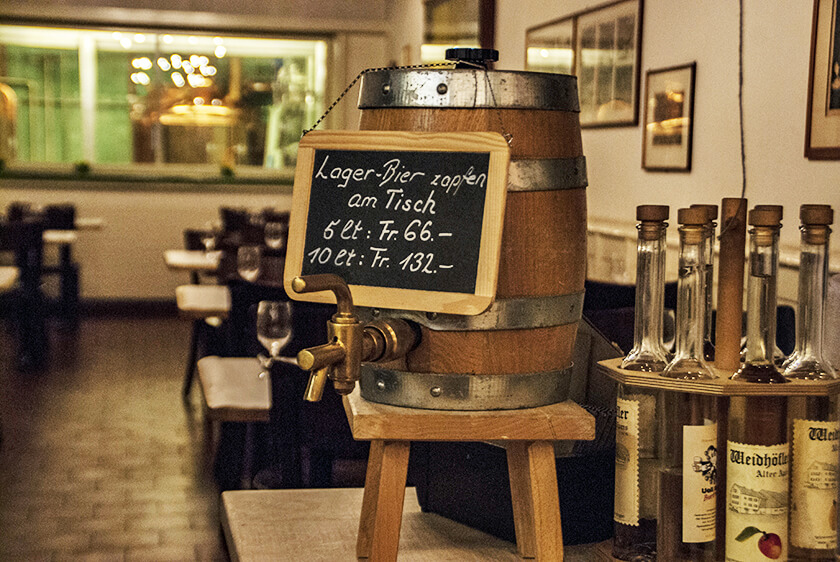
I suggest you take a pen and paper write down the approximate costs because thinking of budget figurately is a lot different than putting it on paper. Writing down your budget is the first step to plan a trip from India to Europe.
To give an idea, the day-to-day costs including accommodation, food, sightseeing, public transportation, and a few extra incidental costs come to somewhere between 60-100 EUR per day in Western Europe and 40-80 EUR per day in Eastern Europe, for a budget traveller. This is when you are not living lavishly but not making too many sacrifices either. If you’re doing activities like sky diving or visiting an adventure park, add those expenses on top.
If you are a little more careful, you can save about 20%-30% more. This includes cooking your own food than eating out, travelling on a bus than on a train, and so on and so forth.
Here’s a related article you may want to read: Top Budget Travel Tips for Europe.
Once you know your budget, the next things to do in this travel blog on how to plan a Europe trip from India is creating an itinerary.
Create An Itinerary
Once you are done with the budget part, the next thing is shortlisting destinations, creating a route-map and finalizing your itinerary.

If you’re planning a one week trip in Europe, for example, I suggest you start with deciding a base city for you, and travel around it, doing a loop. This allows you to not redo the same journey and travel only new places.
For example, during my Europe trip, I chose Zurich as my base city (or my starting and finishing point) and did a big circle around it. Here’s what I did:
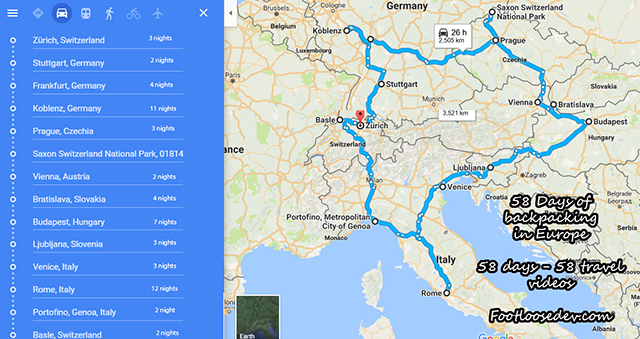
The reason I chose Zurich was that flights from India to Zurich were the cheapest India. Zurich, Frankfurt, Paris, Berlin, Rome are a few popular destinations with cheapest flights from India. Consider starting your trip from one of these cities.
Additionally, ask yourself whether you are into history or art or culture? Or perhaps adventure. And choose destinations accordingly. Also, if you want to travel on a low budget, focus on Eastern Europe. Scandinavia and Western Europe are the two most expensive regions in Europe.
Once you’re done with a rough the itinerary, consider yourself halfway to their entire dilemma of how to plan a Europe trip from India.
Search A Flight
While there is no standard time to book a flight, doing it about 6 weeks prior to your trip is a good idea. Remember, it can also take up to 4 weeks to get your Schengen visa.
A round-trip flight is always cheaper than a one-way flight. But if you want to start from one destination and finish at the other, a multi-destination flight works the best.
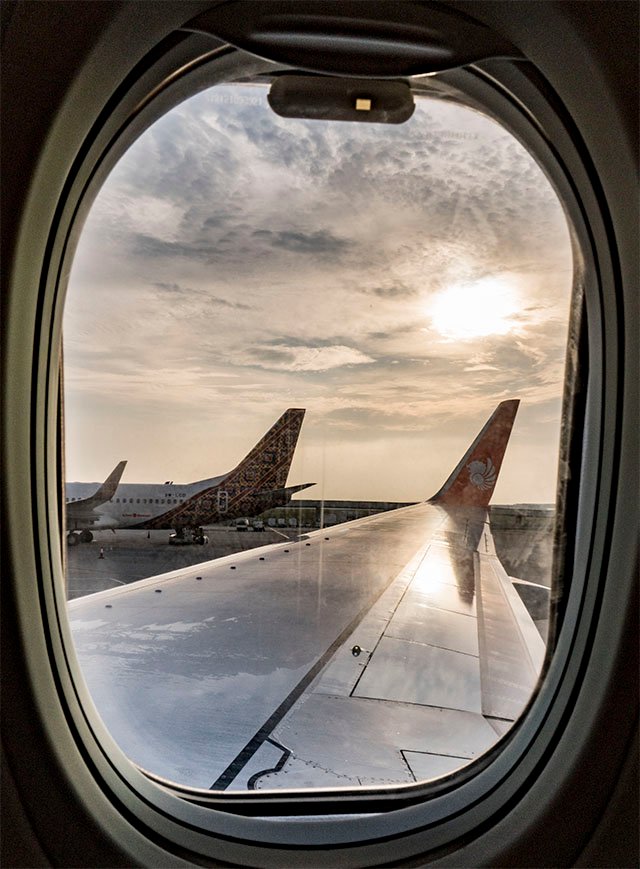
If you have some time before you travel to Europe, it’s best to keep checking the flights from time to time. Signup for a reminder when the price for the flight you’re looking for becomes the cheapest. You can do that on flight booking sites like Skyscanner, Goibibo and others. For best flight deals, check the offers here as well.
And here’s a more detailed article to help you with more tips: Top Tips For Booking Flight Tickets.
Buy Travel Insurance
For Indians travelling to Europe, travel insurance is mandatory. There are several domestic companies like Aditya Birla, Bajaj Allianz and Bharti AXA, among others, I never bought my travel insurance from them.
Because they don’t cover every aspect of my trip.
When buying travel insurance you should know what kind of coverage your insurance policy entitles you to. Travel insurance is not just medical insurance. There are different types of coverage available based on your needs.
Since I carry a lot of expensive photography/computer gear I need something that also covers me in case I get robbed. Eg, I got robbed in Bratislava a few years ago, but my insurance plan covered my damages.
So if you are someone who travels alone, carry a lot of digital equipment, book too many hotels/flights in advance, and want to stay covered no matter what, I suggest you buy your insurance from this company called ‘SafetyWings’. I’ve been using them for a couple of years for all my international travels. It covers me for medical problems, accidents, travel delays, lost checked luggage, and even natural disasters.

Think of travel insurance as an investment and not an expense. It covers you if something goes wrong. A wrong (or a cheap) travel insurance is just as good as having no insurance as all.
You can check Safetywing’s website by clicking here. Check different plans, and buy the one that best suits your needs.
Apply For Schengen Visa
Of course, you cannot plan a trip to Europe from India without getting a valid Schengen visa. Apply for a single-entry tourist visa, and you can use it to cross borders across the Schengen territory.
It is advised to apply for a Schengen Tourist Visa at least 4 weeks prior to the planned trip. In most cases, however, The Embassy Consulate takes only around 10 days to process the application. A tourist Schengen visa is commonly valid for stays no more than 90 days.
Though the process of applying for a Schengen visa looks complicated, it’s rather very simple. I suggest you apply for a Schengen visa on your own and save the agent fee. Here’s a detailed article on How To Apply for Schengen Visa As Indians.
Nex tip in this blog on how to plan a Europe trip from India is learning how to travel inside the continent.
How To Travel Inside Europe
Now that you are ready for the journey, let’s figure out how to best travel inside Europe. From booking hotels to buses, in Europe, everything feels so organised and orderly done — contrary to how we are accustomed to in India — making travelling in Europe fairly easy.

One thing you want to do as soon as you end up in a new town in Europe is visiting the local Tourist Information centre and collecting the free city-map and other reading material. This allows you to know the latest tourist attractions as well as get some local information not covered in guidebooks and online travel blogs.
If you’re going to be using public transport and visiting a lot of museums, invest in a City Card. Most towns across Europe have a City Card that allows unlimited free public transport and free entry to museums. For tourists who enjoy doing too much in too little time, a City Card saves them time as well as money. It is possible to buy a City Card online as well as from the local tourist information centre.
Between your arrival and departure in Europe, you won’t find any immigration checkpoints. Just catch a bus or a train and cross borders inside the Schengen zone, just like you enter from one state to the other in India.
Here’s more information on different transportation modes inside Europe:
Flights: It is possible to find a cheaper flight ticket in Europe than a train/bus ticket, so keep an eye. And it mostly happens for prominent long-distance journeys like Rome-Paris or Paris-Barcelona or Barcelona-Amsterdam. For example, I once travelled from Rome to Paris, with Ryanair, for 25 EUR. The same journey in train and bus would have cost me 80 EUR and 60 EUR, respectively. My three favorite low-cost budget airlines in Europe are Transavia, EasyJet, and Ryanair.
Buses: Buses in Europe are a lot cheaper than trains, and most budget backpackers rely on them to keep their travel costs low. Speaking of my personal experience, during my 2-month backpacking trip to Europe in 2017, I did 18 bus rides and 2 train rides in total. By doing so (and roughly speaking) I saved around 200 EUR. Where a train ride would have cost 50 EUR, the bus took 35, sometimes even lesser. Though of course buses take comparatively more travel-time, for me time was never a problem, and speaking of comfort, I personally found buses just as comfortable as trains. Megabus, Flixbus, Eurolines, Regiojet are a few international bus operators in Europe.
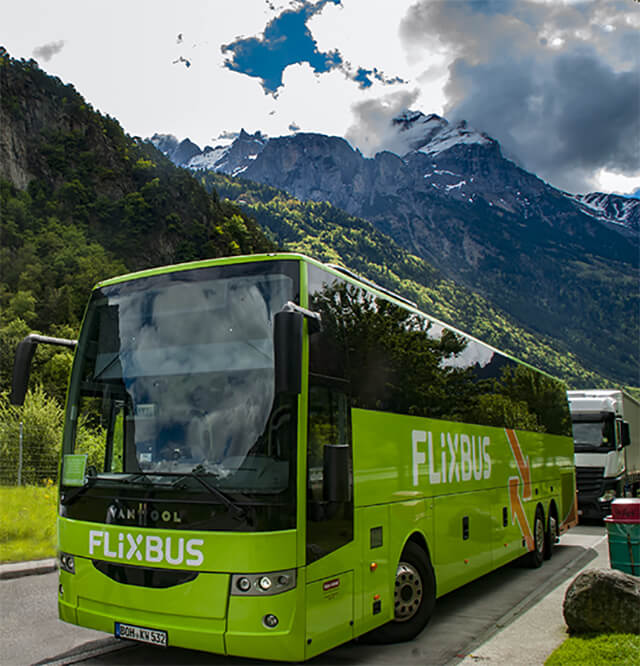
Trains: Trains in Europe are faster than buses, and take a more scenic route, passing through beautiful countryside. Almost every country has its own national train service that is cheaper than EuRail. But if you’re visiting a few countries and you want to travel by train, it’s best to buy a weekly pass for EuRail.
Various bus operators also have a weekly/monthly travel pass. Compare different bus/train operators and find what suits you the best.
Car-Hire: I once did a one-week road trip across Germany and totally loved the experience. It may take a couple of days to get used to, but driving in Europe has its own charm. And if you’re a group of more than 3 people, hiring a car moreover saves you a great deal of money. Read this article for more tips: Tips For Renting A Car In Europe.
I recommend you to check deals at Discover Cars for car rental options.
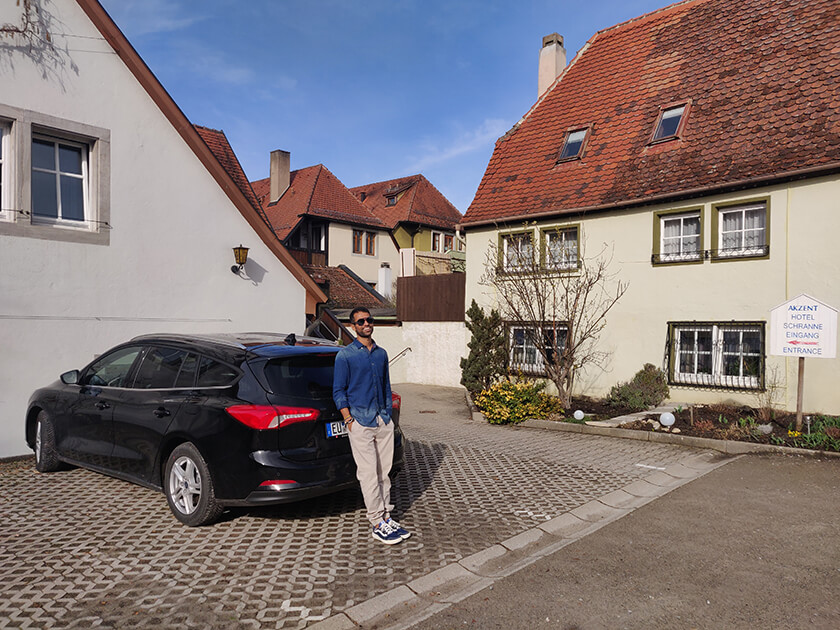
How To Book Accommodation In Europe
From budget hostels to luxury hotels to b&bs, Europe has something for everyone. And the best thing is, no matter what you choose, you’re going to find it neat and clean. There will be no smelly bedsheets waiting for you in Europe.
For me, backpacker hostels are the preferred accommodation type. And this is for two reasons… 1) I travel solo and hostels allow me to meet other travellers. 2) hostels are cheap.
If you want luxury and high-standard, and you are travelling in a pair, choose to stay in a hotel. If you want luxury and high-standard, and you’re three or more people, consider renting an apartment (apartments come with a kitchen too, allowing you to cook your own food). Airbnbs are good if you want a more local experience.

If you’re a long-term backpacker, or local experiences attract you, I suggest you try Couchsurfing as well. I have personally tried Couchsurfing in Europe and loved the experience. It is also possible to volunteer in Europe as an Indian. Use websites like WorldNomds and workaway.info to find volunteering options. Read my horse riding experience In Germany. If you’re planning to volunteer and travel, you only need to apply for a tourist visa.
Best Months For To Plan A Europe Trip From India
Honestly speaking, any time is a good time for Europe.
If you want more backpackers around and want to enjoy open/street cafes, summer is the best time. But remember that summer is the peak season for most countries in Europe, so expect more crowd and high prices wherever you go.
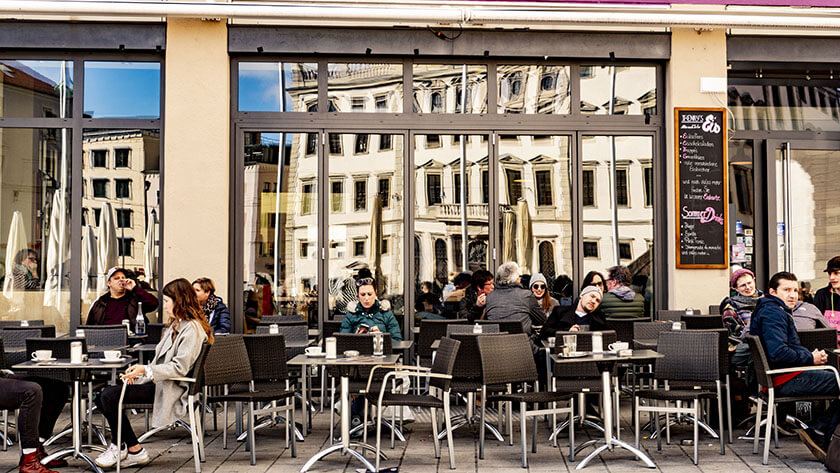
If you want to experience Christmas markets in Europe and cosy indoor cafes, visit during winter. Daylight remains fairly limited during winter, but that doesn’t stop locals and tourists to enjoy the charms of Europe. Winter makes for a romantic time to travel in Europe.

If you want to visit Europe in the off-season (though there’s nothing like an off-season for Europe, but only fewer tourists around) visit during monsoon. Unlike in India, it only drizzles in Europe. The rain never stops any movement in Europe.

What To Carry From India For A Europe Trip
Wondering what to carry for your Europe trip? My advice: Not too many things.
Taxis are expensive in Europe. You may have to walk. Chances are, you are moreover going to shop in Europe, so don’t carry too much.
For a trip lasting one week or more, this is what I suggest you carry:
- 3-6 pairs of T-shirts
- 2-3 Paris of party wear shirts
- 4 bottoms or pants
- Ankle boots
- 1 sweater/fleece (for all seasons)
- Thermals and a heavy jacket (for winter)
- Sunglasses (for summer and spring)
- Waterproof jacket (for monsoon)
- 5-6 pairs of socks
- Medications and first-aid kit
- Basic Toiletry

9 Tips For How To Plan A Europe Trip From India
- Use websites like Musement, GetYourGuide, Klool and Viator to book group tours in Europe.
- Don’t try to explore too many destinations in a short frame of time. You will end up missing the essence of the place.
- Learn some local phrases. Eg. people in France will behave much nicely if you start the conversation in French and then gradually switch to English. Same with Germans or Italians or Czech.
- The standard voltage in Europe is 230V and the frequency is 50HZ which is the same in India but the socket type varies. I advise you to buy an international converter to be able to use it worldwide. You can buy a converter in most airports around the world.
- Your Indian sim card is either not going to work or charge you hefty amounts for international roaming. Solution? Buy a local sim-card, or get an international sim-card. Matrix, UniConnect and WorldSIM are some of the top international sim-card providers.
- Almost all tourist towns in Europe organise a free-walking tour. Ask the local tourist information center about the timing and the starting point. Walking tours are great to get to know about a city and even make some friends if you’re travelling solo.
- I understand that the first Euro trip is always about seeing the maximum number of countries, so be it. The only advice is don’t just stick to visiting big towns, rather, explore a bit of countryside too. It is the countryside in Europe that makes it more romantic and beautiful.
- Though most people say the contrary, I find tipping in Europe isn’t mandatory — especially in Western Europe. If you do not have the money or don’t like the service, it’s okay to not tip at a restaurant or at a bar. The waiters are not going to frown upon you, as they otherwise do in India.
- Euro is the standard currency across all Schengen countries. Rather than carrying cash, I suggest you carry a travel card. An International travel card works similar to your Bank Debit Card in India — just transfer funds from your bank account to your travel card, and voila. Refill when the funds are exhausted. Countries that have their own currency like Hungary and the Czech Republic happily accept Euros everywhere.
I understand the process of how to plan a Europe trip from India can feel daunting, especially for the first-timers. But after a few trips, you automatically start understanding the continent better. Which bus service is the cheapest? How to find a free walking tour? How to survive in Europe as a vegan. All these learning come to you naturally. But whether you travel Europe as a rookie or as a savvy traveller, any time spent in Europe makes for a beautiful memory.
That’s all in this blog on how to plan a Europe trip from India. If you have more questions, ask me in the comments below.
About Dev
I am Dev, and I’ve been travelling full-time since 2016. I was a journalism student & started my corporate career as a documentary film-maker in England, before moving to India & becoming a full-time nomad. 25+countries. 50+ Brand Partnerships. And the adventure continues.
Great work! Me and my husband are planning our first Europe trip and were just looking out for this kinda content
It would be great if you can share the locations to book an accommodation in Paris, Amsterdam and Rome.. thanks!
Great blog MR Dev and i am travelling europe may be with in 2-3year acc to this pandamic and full support from me brother love u love from UP
And also great explanation of blog
Hi Dev,
Very nice and helpful blog I must say. I am planning to visit Europe maybe next year.. depending upon the pandemic situation.
Thanks for this post. I will surely consider the points you have listed before planning the trip.
How To Plan A Europe Trip From India
The very process of how to plan a Europe trip from India can feel daunting.
From applying visas to shortlisting destinations to following a strict budget, there is a lot to plan.
When I was thinking of my first ever backpacking trip to Europe, I was quite doubtful too. I had limited money and was travelling alone. To make it even worse, I was travelling Europe for 2-month, straight, covering 8 countries in total. But then, it helped me learn how to plan a Europe trip from India.
And now that I’ve been to Europe about a dozen times since my first trip in 2017, I think it’s time that I share some useful tips and a step-by-step guide and help others in planning a Europe trip from India, the way I did. So here we go…
How To Plan A Europe Trip From India
Before I start, let’s see a quick Youtube video I have posted on my Youtube Channel. This is an overview of my 2 months Europe backpacking trip:
Now let’s start with TIP number 1 in our list of how to plan a Europe trip from India…
Know Your Budget
There is no denying the fact that Europe is an expensive destination for Indians. Even a basic meal in Mc Donalds, somewhere in Zurich, can cost over 1000 Rupees. Knowing how much you can spend always helps.

I suggest you take a pen and paper write down the approximate costs because thinking of budget figurately is a lot different than putting it on paper. Writing down your budget is the first step to plan a trip from India to Europe.
To give an idea, the day-to-day costs including accommodation, food, sightseeing, public transportation, and a few extra incidental costs come to somewhere between 60-100 EUR per day in Western Europe and 40-80 EUR per day in Eastern Europe, for a budget traveller. This is when you are not living lavishly but not making too many sacrifices either. If you’re doing activities like sky diving or visiting an adventure park, add those expenses on top.
If you are a little more careful, you can save about 20%-30% more. This includes cooking your own food than eating out, travelling on a bus than on a train, and so on and so forth.
Here’s a related article you may want to read: Top Budget Travel Tips for Europe.
Once you know your budget, the next things to do in this travel blog on how to plan a Europe trip from India is creating an itinerary.
Create An Itinerary
Once you are done with the budget part, the next thing is shortlisting destinations, creating a route-map and finalizing your itinerary.

If you’re planning a one week trip in Europe, for example, I suggest you start with deciding a base city for you, and travel around it, doing a loop. This allows you to not redo the same journey and travel only new places.
For example, during my Europe trip, I chose Zurich as my base city (or my starting and finishing point) and did a big circle around it. Here’s what I did:

The reason I chose Zurich was that flights from India to Zurich were the cheapest India. Zurich, Frankfurt, Paris, Berlin, Rome are a few popular destinations with cheapest flights from India. Consider starting your trip from one of these cities.
Additionally, ask yourself whether you are into history or art or culture? Or perhaps adventure. And choose destinations accordingly. Also, if you want to travel on a low budget, focus on Eastern Europe. Scandinavia and Western Europe are the two most expensive regions in Europe.
Once you’re done with a rough the itinerary, consider yourself halfway to their entire dilemma of how to plan a Europe trip from India.
Search A Flight
While there is no standard time to book a flight, doing it about 6 weeks prior to your trip is a good idea. Remember, it can also take up to 4 weeks to get your Schengen visa.
A round-trip flight is always cheaper than a one-way flight. But if you want to start from one destination and finish at the other, a multi-destination flight works the best.

If you have some time before you travel to Europe, it’s best to keep checking the flights from time to time. Signup for a reminder when the price for the flight you’re looking for becomes the cheapest. You can do that on flight booking sites like Skyscanner, Goibibo and others. For best flight deals, check the offers here as well.
And here’s a more detailed article to help you with more tips: Top Tips For Booking Flight Tickets.
Buy Travel Insurance
For Indians travelling to Europe, travel insurance is mandatory. There are several domestic companies like Aditya Birla, Bajaj Allianz and Bharti AXA, among others, I never bought my travel insurance from them.
Because they don’t cover every aspect of my trip.
When buying travel insurance you should know what kind of coverage your insurance policy entitles you to. Travel insurance is not just medical insurance. There are different types of coverage available based on your needs.
Since I carry a lot of expensive photography/computer gear I need something that also covers me in case I get robbed. Eg, I got robbed in Bratislava a few years ago, but my insurance plan covered my damages.
So if you are someone who travels alone, carry a lot of digital equipment, book too many hotels/flights in advance, and want to stay covered no matter what, I suggest you buy your insurance from this company called ‘SafetyWings’. I’ve been using them for a couple of years for all my international travels. It covers me for medical problems, accidents, travel delays, lost checked luggage, and even natural disasters.

Think of travel insurance as an investment and not an expense. It covers you if something goes wrong. A wrong (or a cheap) travel insurance is just as good as having no insurance as all.
You can check Safetywing’s website by clicking here. Check different plans, and buy the one that best suits your needs.
Apply For Schengen Visa
Of course, you cannot plan a trip to Europe from India without getting a valid Schengen visa. Apply for a single-entry tourist visa, and you can use it to cross borders across the Schengen territory.
It is advised to apply for a Schengen Tourist Visa at least 4 weeks prior to the planned trip. In most cases, however, The Embassy Consulate takes only around 10 days to process the application. A tourist Schengen visa is commonly valid for stays no more than 90 days.
Though the process of applying for a Schengen visa looks complicated, it’s rather very simple. I suggest you apply for a Schengen visa on your own and save the agent fee. Here’s a detailed article on How To Apply for Schengen Visa As Indians.
Nex tip in this blog on how to plan a Europe trip from India is learning how to travel inside the continent.
How To Travel Inside Europe
Now that you are ready for the journey, let’s figure out how to best travel inside Europe. From booking hotels to buses, in Europe, everything feels so organised and orderly done — contrary to how we are accustomed to in India — making travelling in Europe fairly easy.

One thing you want to do as soon as you end up in a new town in Europe is visiting the local Tourist Information centre and collecting the free city-map and other reading material. This allows you to know the latest tourist attractions as well as get some local information not covered in guidebooks and online travel blogs.
If you’re going to be using public transport and visiting a lot of museums, invest in a City Card. Most towns across Europe have a City Card that allows unlimited free public transport and free entry to museums. For tourists who enjoy doing too much in too little time, a City Card saves them time as well as money. It is possible to buy a City Card online as well as from the local tourist information centre.
Between your arrival and departure in Europe, you won’t find any immigration checkpoints. Just catch a bus or a train and cross borders inside the Schengen zone, just like you enter from one state to the other in India.
Here’s more information on different transportation modes inside Europe:
Flights: It is possible to find a cheaper flight ticket in Europe than a train/bus ticket, so keep an eye. And it mostly happens for prominent long-distance journeys like Rome-Paris or Paris-Barcelona or Barcelona-Amsterdam. For example, I once travelled from Rome to Paris, with Ryanair, for 25 EUR. The same journey in train and bus would have cost me 80 EUR and 60 EUR, respectively. My three favorite low-cost budget airlines in Europe are Transavia, EasyJet, and Ryanair.
Buses: Buses in Europe are a lot cheaper than trains, and most budget backpackers rely on them to keep their travel costs low. Speaking of my personal experience, during my 2-month backpacking trip to Europe in 2017, I did 18 bus rides and 2 train rides in total. By doing so (and roughly speaking) I saved around 200 EUR. Where a train ride would have cost 50 EUR, the bus took 35, sometimes even lesser. Though of course buses take comparatively more travel-time, for me time was never a problem, and speaking of comfort, I personally found buses just as comfortable as trains. Megabus, Flixbus, Eurolines, Regiojet are a few international bus operators in Europe.

Trains: Trains in Europe are faster than buses, and take a more scenic route, passing through beautiful countryside. Almost every country has its own national train service that is cheaper than EuRail. But if you’re visiting a few countries and you want to travel by train, it’s best to buy a weekly pass for EuRail.
Various bus operators also have a weekly/monthly travel pass. Compare different bus/train operators and find what suits you the best.
Car-Hire: I once did a one-week road trip across Germany and totally loved the experience. It may take a couple of days to get used to, but driving in Europe has its own charm. And if you’re a group of more than 3 people, hiring a car moreover saves you a great deal of money. Read this article for more tips: Tips For Renting A Car In Europe.
I recommend you to check deals at Discover Cars for car rental options.

How To Book Accommodation In Europe
From budget hostels to luxury hotels to b&bs, Europe has something for everyone. And the best thing is, no matter what you choose, you’re going to find it neat and clean. There will be no smelly bedsheets waiting for you in Europe.
For me, backpacker hostels are the preferred accommodation type. And this is for two reasons… 1) I travel solo and hostels allow me to meet other travellers. 2) hostels are cheap.
If you want luxury and high-standard, and you are travelling in a pair, choose to stay in a hotel. If you want luxury and high-standard, and you’re three or more people, consider renting an apartment (apartments come with a kitchen too, allowing you to cook your own food). Airbnbs are good if you want a more local experience.

If you’re a long-term backpacker, or local experiences attract you, I suggest you try Couchsurfing as well. I have personally tried Couchsurfing in Europe and loved the experience. It is also possible to volunteer in Europe as an Indian. Use websites like WorldNomds and workaway.info to find volunteering options. Read my horse riding experience In Germany. If you’re planning to volunteer and travel, you only need to apply for a tourist visa.
Best Months For To Plan A Europe Trip From India
Honestly speaking, any time is a good time for Europe.
If you want more backpackers around and want to enjoy open/street cafes, summer is the best time. But remember that summer is the peak season for most countries in Europe, so expect more crowd and high prices wherever you go.

If you want to experience Christmas markets in Europe and cosy indoor cafes, visit during winter. Daylight remains fairly limited during winter, but that doesn’t stop locals and tourists to enjoy the charms of Europe. Winter makes for a romantic time to travel in Europe.

If you want to visit Europe in the off-season (though there’s nothing like an off-season for Europe, but only fewer tourists around) visit during monsoon. Unlike in India, it only drizzles in Europe. The rain never stops any movement in Europe.

What To Carry From India For A Europe Trip
Wondering what to carry for your Europe trip? My advice: Not too many things.
Taxis are expensive in Europe. You may have to walk. Chances are, you are moreover going to shop in Europe, so don’t carry too much.
For a trip lasting one week or more, this is what I suggest you carry:
- 3-6 pairs of T-shirts
- 2-3 Paris of party wear shirts
- 4 bottoms or pants
- Ankle boots
- 1 sweater/fleece (for all seasons)
- Thermals and a heavy jacket (for winter)
- Sunglasses (for summer and spring)
- Waterproof jacket (for monsoon)
- 5-6 pairs of socks
- Medications and first-aid kit
- Basic Toiletry

9 Tips For How To Plan A Europe Trip From India
- Use websites like Musement, GetYourGuide, Klool and Viator to book group tours in Europe.
- Don’t try to explore too many destinations in a short frame of time. You will end up missing the essence of the place.
- Learn some local phrases. Eg. people in France will behave much nicely if you start the conversation in French and then gradually switch to English. Same with Germans or Italians or Czech.
- The standard voltage in Europe is 230V and the frequency is 50HZ which is the same in India but the socket type varies. I advise you to buy an international converter to be able to use it worldwide. You can buy a converter in most airports around the world.
- Your Indian sim card is either not going to work or charge you hefty amounts for international roaming. Solution? Buy a local sim-card, or get an international sim-card. Matrix, UniConnect and WorldSIM are some of the top international sim-card providers.
- Almost all tourist towns in Europe organise a free-walking tour. Ask the local tourist information center about the timing and the starting point. Walking tours are great to get to know about a city and even make some friends if you’re travelling solo.
- I understand that the first Euro trip is always about seeing the maximum number of countries, so be it. The only advice is don’t just stick to visiting big towns, rather, explore a bit of countryside too. It is the countryside in Europe that makes it more romantic and beautiful.
- Though most people say the contrary, I find tipping in Europe isn’t mandatory — especially in Western Europe. If you do not have the money or don’t like the service, it’s okay to not tip at a restaurant or at a bar. The waiters are not going to frown upon you, as they otherwise do in India.
- Euro is the standard currency across all Schengen countries. Rather than carrying cash, I suggest you carry a travel card. An International travel card works similar to your Bank Debit Card in India — just transfer funds from your bank account to your travel card, and voila. Refill when the funds are exhausted. Countries that have their own currency like Hungary and the Czech Republic happily accept Euros everywhere.
I understand the process of how to plan a Europe trip from India can feel daunting, especially for the first-timers. But after a few trips, you automatically start understanding the continent better. Which bus service is the cheapest? How to find a free walking tour? How to survive in Europe as a vegan. All these learning come to you naturally. But whether you travel Europe as a rookie or as a savvy traveller, any time spent in Europe makes for a beautiful memory.
That’s all in this blog on how to plan a Europe trip from India. If you have more questions, ask me in the comments below.
About Dev
I am Dev, and I’ve been travelling full-time since 2016. I was a journalism student & started my corporate career as a documentary film-maker in England, before moving to India & becoming a full-time nomad. 25+countries. 50+ Brand Partnerships. And the adventure continues.
Great work! Me and my husband are planning our first Europe trip and were just looking out for this kinda content
It would be great if you can share the locations to book an accommodation in Paris, Amsterdam and Rome.. thanks!
Great blog MR Dev and i am travelling europe may be with in 2-3year acc to this pandamic and full support from me brother love u love from UP
And also great explanation of blog
Hi Dev,
Very nice and helpful blog I must say. I am planning to visit Europe maybe next year.. depending upon the pandemic situation.
Thanks for this post. I will surely consider the points you have listed before planning the trip.
Source https://www.shipafreight.com/tradelane/india-to-united-kingdom/
Source https://footloosedev.com/how-to-plan-europe-trip-from-india/#:~:text=Writing%20down%20your%20budget%20is%20the%20first%20step,day%20in%20Eastern%20Europe,%20for%20a%20budget%20traveller.
Source https://footloosedev.com/how-to-plan-europe-trip-from-india/